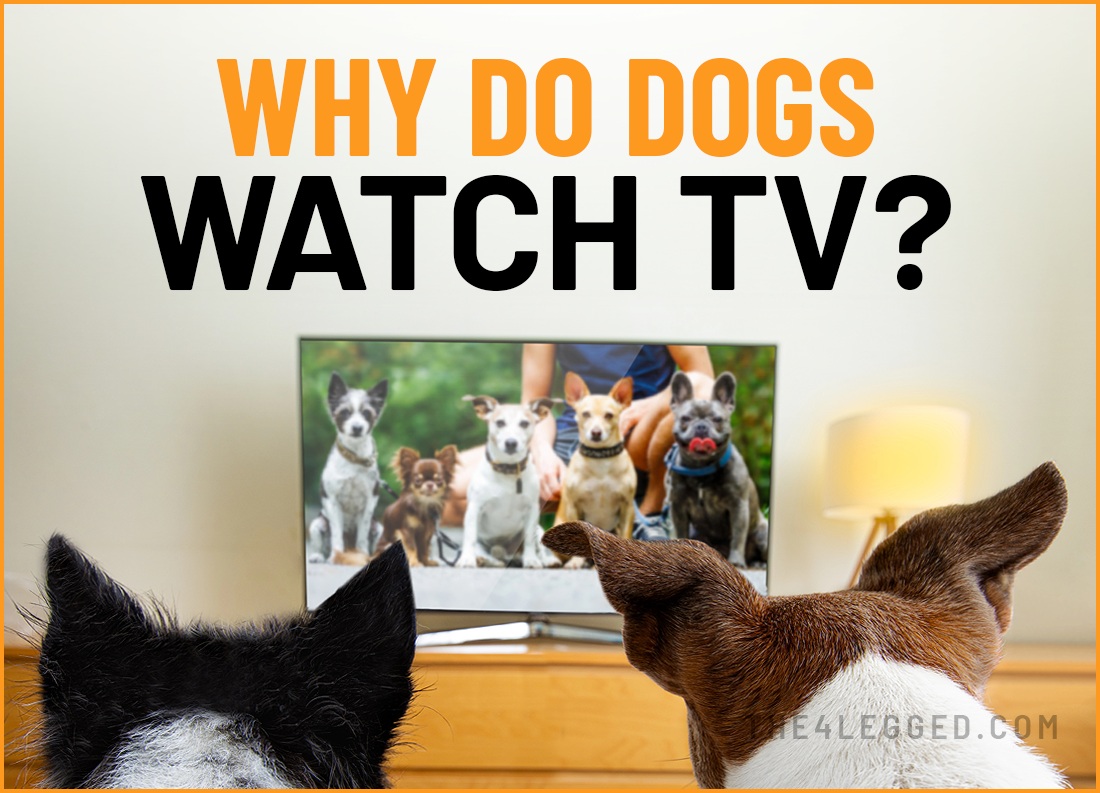Have you ever caught your pup staring at the screen, ears perked, completely absorbed in the action? You’re not alone in wondering Why Do Dogs Watch TV, and the answer is more fascinating than you might think. From the way their eyes capture motion to the sounds that spark curiosity, every wag and bark tells a story. Keep reading to uncover what really grabs your dog’s attention on the screen—and how you can turn TV time into an enriching, tail-wagging experience.
Key Takeaways
- Dogs watch TV primarily for companionship with their owners, and about 88% of them show active engagement with what they see on screen, according to a recent dog owner survey.
- About two thirds of pet parents leave the TV on for their dogs when they are away, as reported by a dog owner survey, showing how common this practice is.
- Different dogs respond to TV stimuli in unique ways, influenced by their personalities, breed traits, and the sounds and movements they perceive.
- High-resolution TVs enhance the viewing experience for dogs, allowing better motion perception and fluid motion, especially for shows featuring real animals.
Why Do Dogs Watch TV?
Dogs are known for their loyalty and companionship, and this extends to their TV-watching habits as well. Unlike humans who might watch TV for entertainment, many dogs watch television alongside their dog owners for companionship, strengthening the bond between pet parents and their furry friend.
A significant number of companion dogs show active engagement with TV content. A study found that 88.3% of dogs actively watch TV, indicating a profound interest among them. This interest is often piqued by unique noises and movements on the TV screen that grab a dog’s attention. For example, when dogs watch television, dog barks and squeaky noises from the screen can trigger engagement. Imagine the excitement of your pooch when they hear a squeaky toy or see other dogs running across the screen!
Dogs also have fascinating reactions to what they see when they watch on TV. When they spot other dogs on screen, some dogs bark at the TV in response to certain stimuli, and they might even look behind the TV, trying to find the source of the commotion. These behaviors not only demonstrate their engagement but also reveal their curiosity and the way they process what they see on TV, including their ability to visually recognize other dogs.
What Attracts Dogs to TV Screens?
Dogs have a remarkable ability to be drawn to certain stimuli on a TV screen. The sounds of barking, squeaky noises, and other animal noises mimic real life for dogs, making these sounds particularly attractive. If you’ve ever noticed your dog perking up at the sound of a doorbell on TV, you know how real these experiences can feel to them, though dogs may not always perceive the animals on screen as a real animal.
Different breeds and individual dogs react to TV content in various ways:
- Excitable dogs, such as terriers bred to hunt vermin, are more likely to track movement on screen and respond to squeaky noises.
- Anxious dogs may respond more to human-centric audio and visuals.
- Sporting dogs and herding dogs, bred for responsiveness to movement, tend to be more interested in fast-moving images and action.
Modern TVs with higher refresh rates allow continuous motion to appear smoother, allowing dogs to perceive fluid motion more naturally and making the experience more engaging. This is a significant improvement over older TVs, which had lower refresh rates that could cause flickering and less engaging visuals for dogs.
The combination of visual and audio stimuli makes TV an interesting experience for dogs. Whether it’s the sound of other dogs barking, the sight of fast-moving objects, or the realistic portrayal of animals, these elements together capture a dog’s attention and make TV watching enjoyable.
How Dogs See When They Watch TV
Understanding how pups perceive TV images starts with recognizing their unique visual capabilities. Dogs have a significantly lower visual acuity than humans, roughly equivalent to 20/75 vision. They have more rods in their eyes than humans, enhancing their ability to see in low light and giving them superior night vision. This means that while they can see images on the TV screen, they might not see them as clearly as we do.
Dogs’ color perception is also different from humans. They have dichromatic vision, meaning they primarily see shades of blue, yellow, and gray, but have difficulty distinguishing reds and greens. This variation in color perception means that pups are more likely to engage with content that displays these colors well. Therefore, a bright blue sky or a yellow ball on TV might stand out more to them than other colors.
One of the most fascinating aspects of many dogs watching TV is their ability to recognize other dogs and animals on screen, capturing the dog’s attention while paying attention. This recognition can lead to various reactions, such as barking or attempting to interact with the TV, showcasing how dogs process screen interaction behavior.
Dogs also have a higher flicker fusion frequency than humans, allowing them to detect flickers up to 75 hertz, compared to the human threshold of 55 hertz. This capability makes the images on modern TVs appear more fluid and less flickering, enhancing their viewing experience. According to research from Wisconsin Madison’s School, this better motion perception allows dogs to see continuous motion on modern high-refresh-rate TVs, which older TVs could not provide.
Do All Dogs Enjoy Watching TV?
Not all dogs enjoy watching TV, and their interest can vary greatly. This variation is influenced by individual personalities and breed traits. Different dog breeds show varying levels of interest in TV, with some breeds being more visually stimulated than others. For example, terriers and herding dogs, bred to hunt vermin and respond to movement, are often more interested in TV than scent-trailing breeds like bloodhounds.
A dog’s personality plays a significant role in their TV-watching habits. Temperament-based behaviors can affect how they interact with TV content. Some dogs might be more curious and engaged, while others might be indifferent. Younger dogs, with sharper vision and curiosity, are more likely to engage with TV, while older dogs may be less interested due to declining vision.
While TV can serve as a distraction, it should never replace regular physical exercise and outdoor time. Watching TV can promote relaxation and help prevent destructive behaviors resulting from boredom or anxiety. However, it’s important to balance TV time with other activities to ensure a well-rounded experience for your pet.
Favorite TV Shows for Dogs
Dogs have shown a strong preference for certain types of TV content, and some even have a favorite TV show they enjoy watching. Research indicates that dogs enjoy nature documentaries the most, as these feature real animals and action-packed scenes.
Dogs tend to prefer real animals over cartoon animals. The movement and sounds of real animals captivate their attention more effectively than animated ones. This preference is likely because the content mimics their real-life experiences, making sense and engaging for them. A certified applied animal behaviorist would agree with this observation.
Interestingly, dogs demonstrate three distinct viewing styles: animal-focused viewers, anticipatory followers, and cautious responders to human or inanimate content. These styles highlight the diverse ways in which dogs engage with TV, depending on their individual preferences and personalities.
High-Resolution TVs and Dogs
High-resolution TVs have significantly enhanced the TV-watching experience for dogs. These TVs provide more lifelike images, making the viewing experience more immersive for our canine friends. The higher refresh rates of contemporary HD televisions, typically at 120 Hertz, offer better motion clarity, which is crucial for dogs’ higher flicker fusion frequency.
Dogs can detect faster movements on screens, thanks to their better motion perception. This capability makes the images on modern TVs appear more fluid and less flickering, enhancing their engagement. Special features like high frames per second and specific coloring are tailored for dogs in programs like DOGTV, making the content even more appealing.
With these advancements, watching TV has become a more enjoyable activity for dogs, providing them with a richer and more engaging experience.
Should You Let Your Dog Watch TV Alone?
Leaving the TV on can be beneficial for dogs, especially when they are home alone. It helps in several ways:
- Helps dogs become accustomed to various noises, potentially reducing their anxiety towards sounds like fireworks or the vacuum cleaner.
- Provides a calming effect that can aid in stress reduction.
- Decreases issues like excessive barking.
While it’s okay to leave the TV on for dogs when they are home alone, pet parents should keep the volume low and allow the dog to move away from the TV if they choose. TV can serve as an alternative distraction method from loud noises, similar to relaxing music.
However, dogs should not be expected to stay engaged during a full movie, as their attention span may vary. It’s important to monitor how your dog reacts during TV time and adjust accordingly to ensure they are comfortable and happy. Remember, TV time should never replace outdoor time, which is essential for your dog’s well-being.
How to Make TV Time Enjoyable for Dogs
Making TV time enjoyable for dogs involves:
- Creating a comfortable and engaging environment.
- Setting up a cozy viewing area with cushions and blankets on the couch to help dogs feel relaxed while watching TV.
- Providing a quiet environment to enhance their focus and enjoyment during TV time.
These strategies can also be adapted for other pets, such as cats, to ensure all pets have a positive and enjoyable experience.
To provide a well-rounded TV watching experience for your dog:
- Provide interactive toys to keep dogs engaged during TV watching sessions.
- Balance TV time with other activities like physical exercise and interactive games.
- Keep viewing sessions brief to prevent overstimulation.
- Regularly check how your dog reacts during TV time.
Offering positive reinforcement, like treats, can create a positive association with TV watching, making it a fun and rewarding activity for your dog.
Summary
Dogs watch TV for many reasons—companionship, engaging sounds, and the excitement of moving images that match their unique vision. Understanding what draws your pup to the screen helps you create a fun and balanced routine that includes both TV time and plenty of real-world play.
Curious to explore more ways to keep your furry friend happy and stimulated? Check out our collection of dog-care guides and discover more insights into common dog behaviors to keep your pup entertained and thriving.
Frequently Asked Questions
Why do dogs watch TV with their owners?
Dogs watch TV with their owners for companionship and to feel closer, enjoying the shared experience. It’s a great way to bond and relax together!
What types of TV content do dogs prefer?
Dogs really enjoy watching content that features animals and nature, like documentaries showcasing wildlife. It’s no surprise they get captivated by the sights and sounds of their fellow creatures!
How do dogs perceive images on TV?
Dogs perceive images on TV differently from us; they have lower visual acuity and dichromatic vision, but they pick up on fast movements better due to better motion perception. So, while they might not enjoy shows like we do, they can still be entertained by the movement on screen!
Is it okay to leave my dog to watch TV alone?
It’s perfectly fine to leave the TV on for your dog while you’re away; it can actually help soothe their anxiety. Just keep the volume low and make sure they can choose to move away if they want to.
How can I make TV time more enjoyable for my dog?
To make TV time more enjoyable for your dog, set up a cozy spot on the couch, give them interactive toys, and don’t forget to mix in some outdoor time and treats for a well-rounded experience. Remember, cozy moments are better shared!




